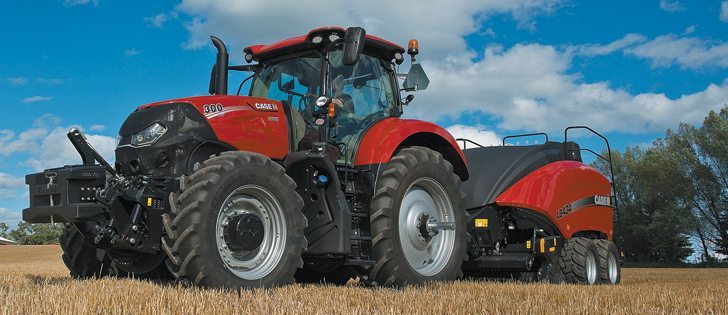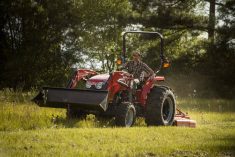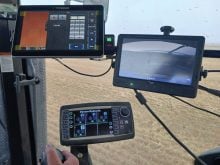DECATUR, Ill. — Haying and forage operations don’t usually warrant tractors specific to that use, but Case IH aims one of its new machines at that market.
The Optum isn’t designed as a single-use tractor but by adding an ISOBUS Class 3 facet to its LB3 and 4 square balers, Case has paired the new tractor to the baler.
Recent profitability in the livestock sector has made most farm machinery manufacturers look to that sector for increased sales. The result is several new products for the animal agriculture area. For Case IH, it meant a new tractor line between its big row crop and fixed-frame seeding machines, the Magnum, and smaller forage and row crop line, the Puma.
Read Also

Growing garlic by the thousands in Manitoba
Grower holds a planting party day every fall as a crowd gathers to help put 28,000 plants, and sometimes more, into theground
Charlie O’Brien of the American Equipment Manufacturers Association said earlier this season that most of the companies that produce equipment for the sector have experienced solid growth in sales and as a result have been focusing research and development in that area.
“They are being responsive, and with cropped commodities being down, and there being a lot (of new) machinery on the farm right now, companies are focusing on their strengths. That means new technology for forage and livestock,” he said.
Jim Walker heads Case IH’s North American division and said the smaller tractor segment has done far better than high horsepower machines, so adding a new machine in this range makes sense.
“Our (research and development) has been able to move its focus from engine emissions to features and products that serve farmers operational needs,” he said at the recent the Farm Progress Show in Decatur, Illinois.
Dave Bogen markets tractors for the company and said the new machine is “more than a higher horsepower Puma.”
He said the Optum represents producers’ first look at what Case IH tractors will have for design and styling in the coming years.
The Optum will still fit with smaller air seeders, grain carts and planters, at 240 or 270 power takeoff horsepower (270 and 300 engine), but big balers and manure hauling and spreading are obvious applications for the CVT-only transmission equipped machines. The transmission will carry the machine all the way from creeper to 40 km-h.
For roading, the machine’s new hydraulic brakes with antilock and reactive steering that returns the wheel to centre when released improve safety.
At the rear end, the Optum has 540 and 1,000 r.p.m. p.t.o. speeds, as well as electronically governed versions of both. The back end, with the three-point hitch option, can lift 19,200 pounds and the front can lift 9,800 lb.
A front-end p.t.o. is also available with 1,000 and 1,000E, aimed at the triple or front mower haying configurations.
For producers looking for hy-draulic heavy tasks, such as air seeder or planter fans, the Optums come standard with 46 U.S. gallon per minute pumps. An optional 58 is available, but maximum flow on a single coupler is 37.
The 4.75 class, suspended front axle, shared with the larger Magnum, can be outfitted with duals and relies on old-school outboard planetaries to get the power to the wheels.
The fuel tank on the Optum is 166 U.S. gallons, 60 more than a similar sized Puma 240 and six bigger than last season’s Magnum 240, both about 270 h.p.
Weight, without ballast, for the Optum is about 23,000 lb., versus 21,000 lb. and 16,000 lb. for the other two.
The cab gets the AFS Pro 700 display as a standard feature, along with its precision agriculture tools. The tool also provides feedback on the LB334 and 434 large square balers, including density, moisture and miss ties. And most importantly for the pairing, an automated material feed control.
The feed-rate control on the new balers will set the optimal speed for the tractor to make the best bales it can.
“Up to nine percent more efficient. That is a lot bales in a day,” said Bogen.
For growers who want control over the number of slices they want from each bale, slice thickness is factored into the ground travel speed and that is used to automatically set tractor ground speed.
The tool allows inexperienced forage harvesting operators to be efficient and build more desirable bales, he said.
Contact michael.raine@producer.com

















